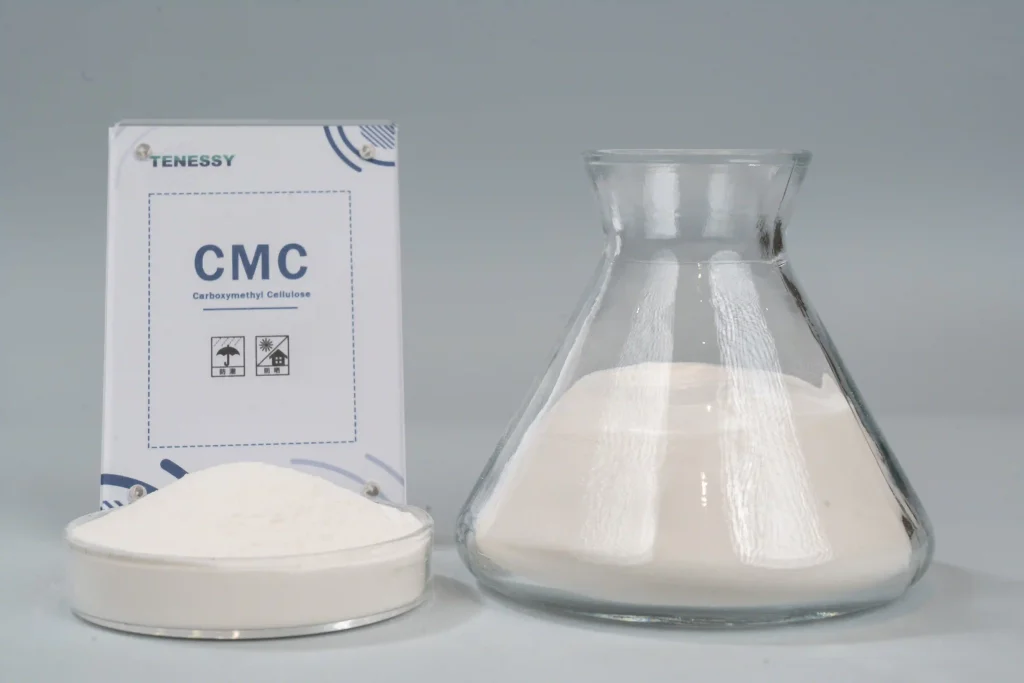¿Qué es la goma de celulosa? Beneficios, seguridad y usos
What Is Cellulose Gum?
Cellulose gum, also known as carboxymethyl cellulose (CMC), is a common food additive that shows up in all kinds of processed foods. If you’ve ever flipped over a package of ice cream, baked goods, or salad dressing and seen “cellulose gum” on the ingredient list, you’re not alone. It’s one of those ingredients that sounds super science-y, but it’s actually derived from plant fiber.
Basically, it’s used to thicken, stabilize, or give a creamy texture to stuff that might otherwise be runny or separate. It doesn’t add flavor, but it does make food feel better in your mouth and last longer on shelves. It’s not just for food either—it’s in everything from toothpaste to eye drops, helping products do their job better and feel nicer to use.
Is Cellulose Gum Bad for You?
This one comes up a lot. Is it safe? Is it natural? Should we be worried?
Well, cellulose gum is generally considered safe by food safety authorities like the FDA in the U.S. and the European Food Safety Authority (EFSA). It’s been used for decades, and there’s not a lot of scary data out there about it. Since it’s not digested by the body (yep, it just passes through), it doesn’t contribute calories or sugar, which makes it a good choice if you’re trying to avoid them.
That said, some people do report minor digestive issues—think gas or bloating—especially if they eat a lot of processed foods with multiple gums or fibers added. But those cases are pretty rare and usually happen when someone’s eating an excessive amount.
It’s worth noting that cellulose gum doesn’t have any nutritional benefits—it’s not a source of vitamins, minerals, or fiber in the way raw fruits or veggies are. So while it’s not harmful, it’s not necessarily helpful in terms of nutrition either. It’s more about function than fuel.
What Is Cellulose Gum Made From?
Here’s the not-so-secret ingredient: cellulose. That’s the stuff plant cell walls are made of—basically, plant fiber. It’s usually made from wood pulp or cotton linters, and then chemically processed into a gum-like substance.
The process involves combining the plant fiber with acetic acid and sodium hydroxide to create a thick, gel-like material. It might sound a little weird, but the resulting compound is stable, non-toxic, and effective at doing its job.
Even though the process sounds very lab-based, the starting material is plant-based. So you’re not dealing with anything synthetic or artificial, technically speaking. It’s just been processed into a form that works well in foods and products.
Pros & Cons of Cellulose Gum
Benefits of Cellulose Gum
- Improves texture: It gives sauces that silky feel and keeps salad dressings from separating. Pretty useful when you want that store-bought quality at home.
- Low in calories: Since your body can’t digest it, it doesn’t count toward your calorie intake, making it popular in “diet” or low-calorie products.
- Gluten-free alternative: It helps give structure in gluten-free baking, kind of like what gluten does in regular bread.
- Shelf-life extender: Keeps foods stable longer, which means less waste and fewer preservatives needed.
- Non-toxic and safe: Approved for use worldwide. Not much controversy around it, and most people tolerate it just fine.
- Versatile uses: It’s found in everything from food and beverages to pharmaceuticals and cosmetics, making it a valuable multi-use ingredient.
Risks of Cellulose Gum
- Possible digestive discomfort: In large amounts, or in people with sensitive guts, it can cause gas, bloating, or a laxative effect.
- Highly processed: It’s natural in origin, but definitely goes through a fair bit of chemical processing to become the final product.
- Not nutritious: There’s no real health benefit—it’s all functional. You’re not getting vitamins, minerals, or anything like that.
- Overused in processed foods: If you see it a lot in your diet, it might be a sign you’re eating more processed food than you realize. Eating whole, fresh foods is always going to be the better option nutritionally.
Applications of Cellulose Gum
You’ll find cellulose gum in all kinds of places:
- Food: Ice cream, baked goods, sauces, low-fat dairy, and even toothpaste. It helps thicken and stabilize textures and prevents ingredients from separating. In low-fat or low-calorie foods, it helps mimic the mouthfeel of higher-fat versions.
- Productos farmacéuticos: Used in pills to help them dissolve properly or to create slow-release medications. It can also be found in liquid medicines as a thickening agent.
- Personal care products: Found in shampoos, lotions, and eye drops as a thickener and stabilizer. It gives creams and gels that smooth, rich consistency.
- Industrial uses: Sometimes used in products like detergents and paints as a stabilizer or to improve viscosity.
Its broad functionality is one of the reasons manufacturers love it—one ingredient, many uses.



Cellulose Gum vs Xanthan Gum
Both cellulose gum and xanthan gum are thickening agents, but they’re not the same thing.
- Source: Cellulose gum is plant-fiber based. Xanthan gum comes from sugar that’s been fermented by bacteria.
- Texture: Xanthan gum is a bit more elastic and stretchy, often used in gluten-free baking for that chewy texture. Cellulose gum gives more of a smooth or creamy vibe.
- Digestibility: Neither one is digested, but some people report more gut issues with xanthan gum, especially in large amounts.
- Price: Xanthan tends to be more expensive, so cellulose gum is used when cost matters.
- Taste/feel: Xanthan can sometimes leave a slightly slimy or gummy feel in the mouth if used too much. Cellulose gum tends to have a more neutral texture.
Basically, they’re similar in what they do, but not in how they’re made. Many gluten-free or keto recipes use a mix of both to get the right balance.
Here’s a contrast table that clearly compares Cellulose Gum y Xanthan Gum across multiple categories:
| Feature | Cellulose Gum | Xanthan Gum |
|---|---|---|
| Source | Derived from plant cellulose (e.g., wood pulp, cotton) | Produced by bacterial fermentation of sugars |
| Common Uses | Food thickener, stabilizer, toothpaste, cosmetics | Gluten-free baking, sauces, dressings, cosmetics |
| Texture Contribution | Smooth, creamy, gel-like | Thick, stretchy, and slightly elastic |
| Taste Impact | Neutral, doesn’t affect flavor | Slight aftertaste if overused |
| Digestibility | Not digestible—passes through the body | Also not digestible, may ferment in the gut |
| Possible Side Effects | Gas or bloating in sensitive individuals (rare) | Can cause digestive upset in some people |
| Vegan-Friendly | Yes | Yes |
| Gluten-Free | Yes | Yes |
| Allergen Potential | Very low | Very low, but a few may have sensitivities |
| Best For | Creamy texture in dairy and sauces, pill coatings | Binding and elasticity in gluten-free doughs |
Conclusion
So, is cellulose gum something to worry about? Probably not. It’s plant-based, widely used, and generally considered safe. It plays a functional role in foods and products, especially for people looking for gluten-free or low-fat options.
That said, like most food additives, it’s a good idea not to go overboard. If you’re eating a lot of processed foods with cellulose gum—or any gums, really—it might be worth cutting back a bit and focusing more on whole foods.
Keep an eye on how often you’re seeing ingredients like this in your diet. They’re not inherently bad, but they’re a sign you might be leaning a little too hard on convenience foods.
But if it’s just in your toothpaste or the occasional scoop of ice cream? No big deal. Just one of those modern food inventions that helps things work a little better, without adding too much drama to your diet.
Preguntas frecuentes
Is Cellulose Gum Halal?
Yes, cellulose gum is considered halal. Since it’s derived from plant sources like wood pulp or cotton, there’s nothing in it that would make it haram, assuming no alcohol or animal-derived substances are used in processing (which is very rare). Most manufacturers will certify it halal if needed.
Is Cellulose Gum Vegan?
Totally. It comes from plants, not animals. No animal products or by-products are involved. It’s a great additive for vegan-friendly processed foods.
Is Cellulose Gum Gluten Free?
Yep. Cellulose gum doesn’t contain any gluten and doesn’t come into contact with gluten during production. It’s actually super common in gluten-free recipes for its binding abilities. It’s one of the go-to ingredients in gluten-free bread, cookies, and cakes.
Can Dogs Have Cellulose Gum?
In small amounts, cellulose gum is generally safe for dogs. It’s sometimes used in commercial pet foods as a thickener or stabilizer. However, it doesn’t add any nutritional value, and some dogs might have sensitive stomachs. So it’s best not to feed them foods that contain a lot of it, and always check with your vet if you’re unsure.
That said, the small amounts found in things like dog treats or kibble are usually no big deal. But don’t go giving your pup your ice cream just because it’s “safe”—too much of anything processed isn’t ideal.





